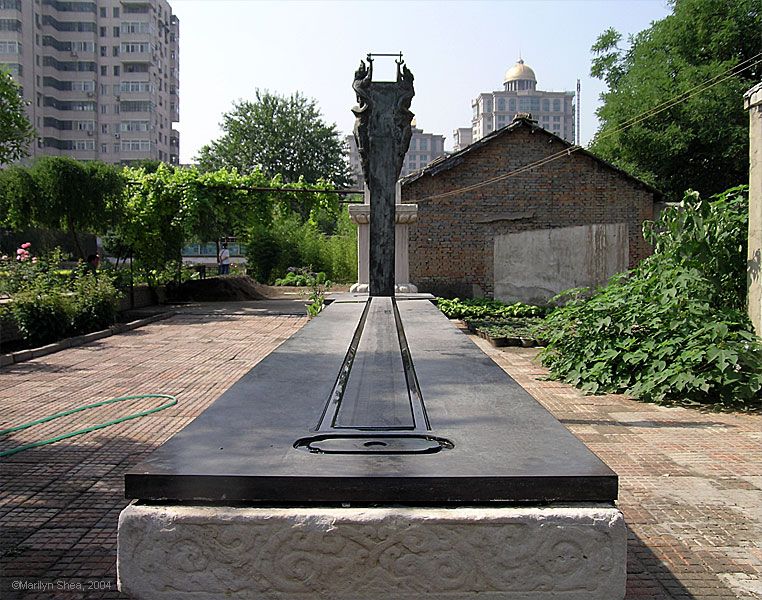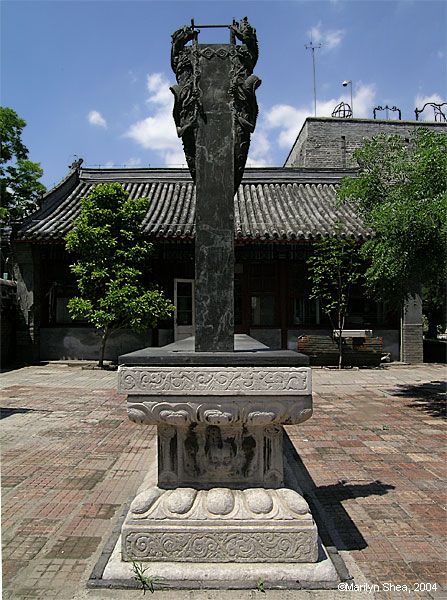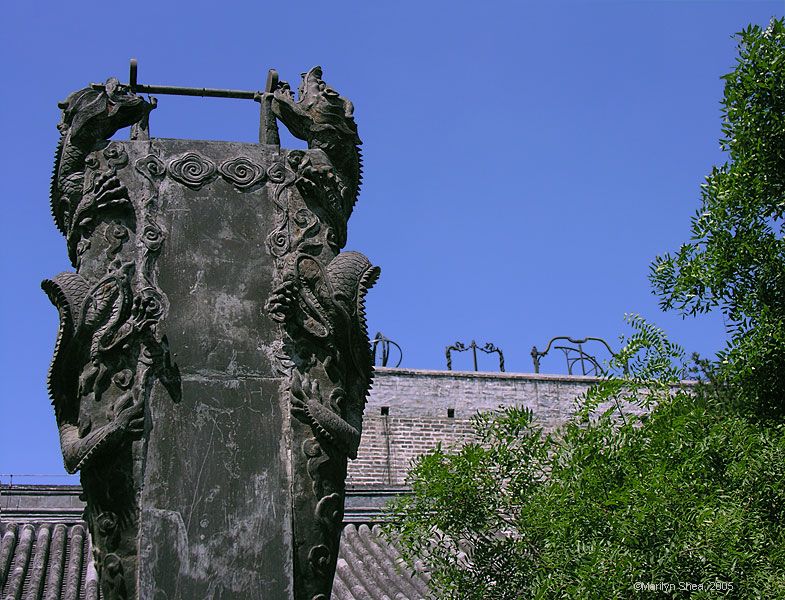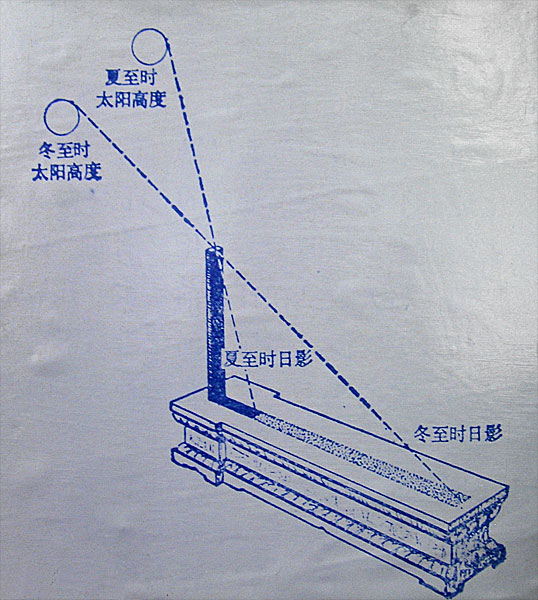 This gnomon (guībiǎo 圭表) was based on a model made in the Ming Dynasty (1368-1644) of the gnomon developed by Guo Shoujing in the Yuan Dynasty (1279-1368). Guo Shoujing changed the gnomon from a simple stick that measured the length of the shadow cast by the sun into a more precise instrument by adding a scale to the base and placing a crossbar across the top with which to measure the exact position of the shadow. This gnomon (guībiǎo 圭表) was based on a model made in the Ming Dynasty (1368-1644) of the gnomon developed by Guo Shoujing in the Yuan Dynasty (1279-1368). Guo Shoujing changed the gnomon from a simple stick that measured the length of the shadow cast by the sun into a more precise instrument by adding a scale to the base and placing a crossbar across the top with which to measure the exact position of the shadow.
Notice the leveling trough that could assure a level surface, align the gnomon, and provide a perfectly smooth surface for measurement, at least on a calm day. Below you will find a detail of the scale used for measurement. It is in 尺 chǐ, one-third of a meter, or approximately a foot.
The original is now in the Purple Mountain Observatory in Nanjing where it was moved for safety when the Japanese invaded in the 1930s. The present copy at the Beijing Ancient Observatory (古观象台) was made in 1983.
|

 This gnomon (guībiǎo 圭表) was based on a model made in the Ming Dynasty (1368-1644) of the gnomon developed by Guo Shoujing in the Yuan Dynasty (1279-1368). Guo Shoujing changed the gnomon from a simple stick that measured the length of the shadow cast by the sun into a more precise instrument by adding a scale to the base and placing a crossbar across the top with which to measure the exact position of the shadow.
This gnomon (guībiǎo 圭表) was based on a model made in the Ming Dynasty (1368-1644) of the gnomon developed by Guo Shoujing in the Yuan Dynasty (1279-1368). Guo Shoujing changed the gnomon from a simple stick that measured the length of the shadow cast by the sun into a more precise instrument by adding a scale to the base and placing a crossbar across the top with which to measure the exact position of the shadow.





